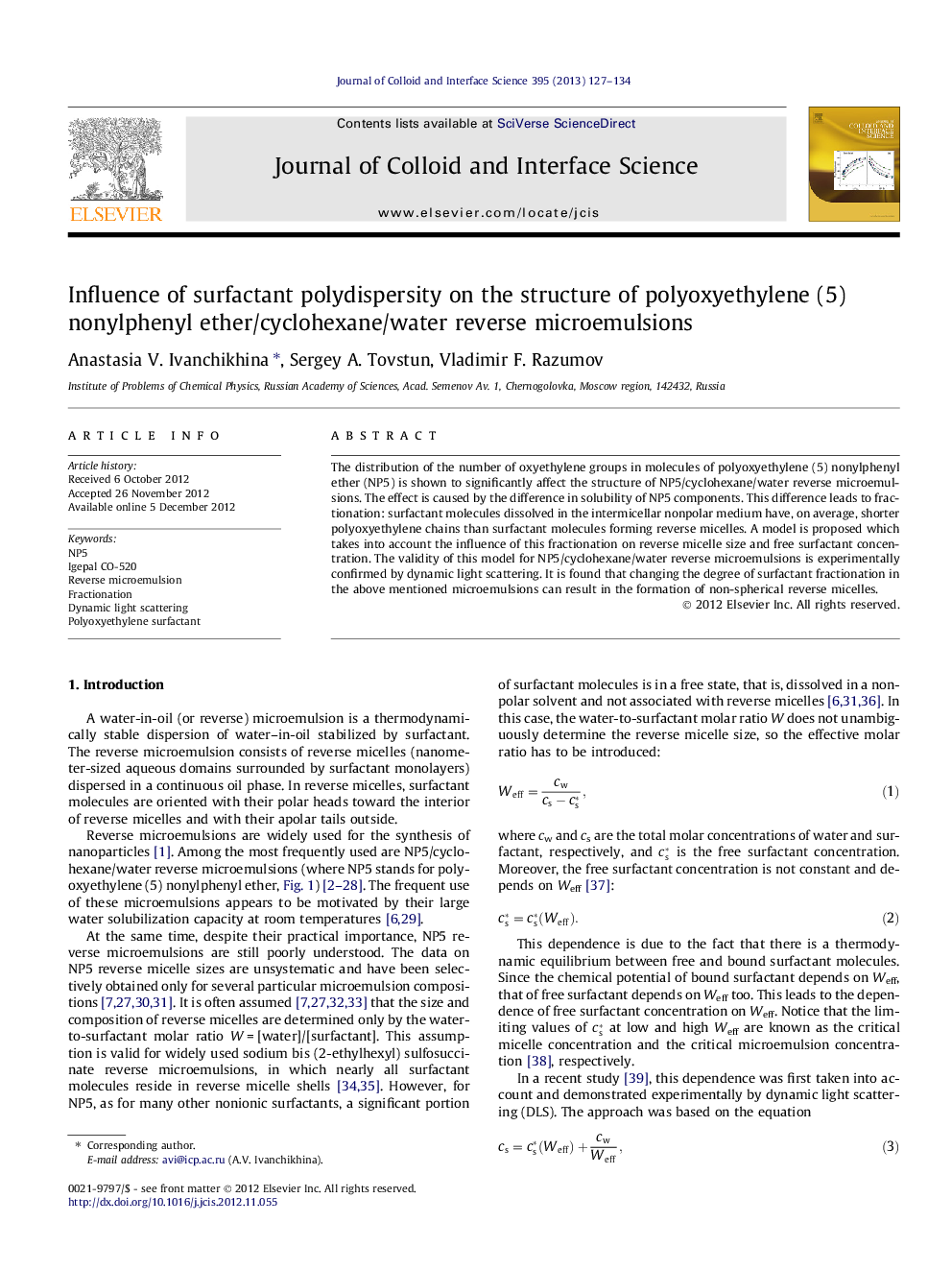| Article ID | Journal | Published Year | Pages | File Type |
|---|---|---|---|---|
| 608055 | Journal of Colloid and Interface Science | 2013 | 8 Pages |
The distribution of the number of oxyethylene groups in molecules of polyoxyethylene (5) nonylphenyl ether (NP5) is shown to significantly affect the structure of NP5/cyclohexane/water reverse microemulsions. The effect is caused by the difference in solubility of NP5 components. This difference leads to fractionation: surfactant molecules dissolved in the intermicellar nonpolar medium have, on average, shorter polyoxyethylene chains than surfactant molecules forming reverse micelles. A model is proposed which takes into account the influence of this fractionation on reverse micelle size and free surfactant concentration. The validity of this model for NP5/cyclohexane/water reverse microemulsions is experimentally confirmed by dynamic light scattering. It is found that changing the degree of surfactant fractionation in the above mentioned microemulsions can result in the formation of non-spherical reverse micelles.
Graphical abstractFigure optionsDownload full-size imageDownload high-quality image (75 K)Download as PowerPoint slideHighlights► The natural polydispersity of ethoxylated surfactants leads to fractionation in microemulsions. ► Surfactant fractionation significantly affects reverse microemulsion structure. ► A model to account for fractionation in reverse microemulsion is proposed. ► Validity of the model is confirmed by dynamic light scattering.
